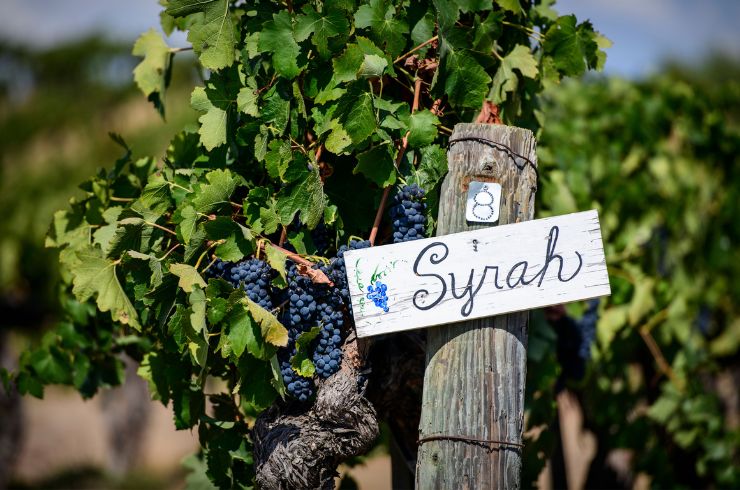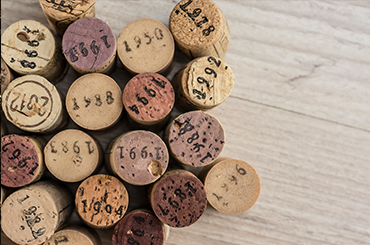The longer you cellar, the more you wish you’d heeded good advice. It’s hard enough keeping your mitts off the good stuff – the last thing you want to do is make expensive rookie mistakes. It’s been more than 20 years since I first cellared a wine, and these are my key lessons so far.
1. Old does not automatically mean good
There’s a widespread misconception that all wine gets better as it ages and rises in value. It’s more accurate to say the opposite is true. Most wine declines in quality beyond two to three years from release. Wines that improve over the long-term (beyond 10 years from release) are rare. And most old wine is more or less worthless as a drink and also in sale terms. Old wine that has been badly stored or made to be consumed young, generally tastes disgusting.
2. Keep it cool
You can keep your wine immaculately cool and dark for 20 years, and then expose it to harmful levels of heat for just an hour and undo all the good work of the previous 20 years. Wine is perishable and heat is its enemy. Heat dulls the flavours, develops it prematurely and robs it of its life. If you’re going to cellar, you need to find a way to keep your wine below 17 degrees Celsius, but ideally between 12 and 15 degrees. If you go above this range, factor in that your wines will develop at a faster rate and are unlikely to cellar long-term.
3. Keep it stable
Some wines turn out more robust than we expect. I’ve tasted fantastic 30-year-old wines that were not stored in ideal conditions. They are exceptions and were obviously blessed with exceptionally sound corks. Although the temperature they were cellared in may not have been ideal, there’s a good chance they were stored at a relatively stable temperature (without wild fluctuations). Slow and steady wins the cellaring race.
4. Don’t let there be light
It’s always horrifying to see tip-top quality, cellar-worthy wines on sale in clear-glass display cabinets beamed with bright light. This is no way to store wine and will dim its quality. Light-struck, I believe is the term. If you see a wine stored like this at a good price – and you think it might have been there for a while – walk on by, it won’t be worth it.
5. Lay it down
I once heard a winery say they’d accidentally stored a batch of top wine (cork-sealed) standing upright in their storeroom and after two years, it had deteriorated to an unsaleable degree. In short, the corks had dried out and their worth as a seal was badly affected. If a wine is cork-sealed, lay it down. If a wine is screwcapped or glass-stop sealed, it doesn’t matter.
6. Do you like aged wine?
If you’ve never tasted aged wine before, there’s nothing to guarantee you will think it tastes better. Aged wine can be an acquired taste, which you may not care to acquire. Beg, borrow, steal or buy at auction, but somehow get your hands on some aged wine. Settle in, keep an open mind and make an honest assessment of whether or not it’s a drink for you. You could save yourself an awful lot of time and bother.
7. The anti-movement movement
Cellarworthy wines are stay-at-home types. They don’t much like to travel or move around. The best, aged wines are often those wines that have never left the winery cellar. Of course this isn’t much good to any of us, but there’s a lesson to be taken from it: keep your wine away from vibrations and don’t move the bottles around too often and/or unnecessarily.
8. Disciplined cellaring
Wines in a cellar should be left alone as much as possible, but few cellars are ‘set and forget’. A well-managed cellar is better than a bulging one; quantity outranks quantity every time. The biggest mistake people make on starting a cellar is piling it full of every wine they’ve seen on special. Manage your cellar’s intake, don’t succumb to it.
9. The real price of wine
A cellar is about investing in personal enjoyment, but it can be a good idea to familiarise yourself with the basics of online wine auctions and the kinds of prices the wines you like tend to fetch. Trust me, learning the real price of wine can be a grounding experience. A lot of $50 wines sell for $25 at auction – after the hype has died down.
10. The humidity issue
My cellar is stable in temperature and light, but suffers wild swings in humidity. This doesn’t cause any issues save for one: some of the labels have deteriorated with mould. It’s an interesting thing. Some labels are far more susceptible than others, depending on the paper and coating used. Ideally humidity should be kept steady around a 70 to 80 per cent level. This humidity is not only good for keeping mould at bay, but is another means for keeping cork moist. (Ignore if you’re lucky enough to have a cellar full of screwcap-sealed wines).
11. Silk purses and sow’s ears
The whole idea of cellaring is that you keep a wine in specific conditions in order for the wine to improve. Wines that will improve in the cellar can be either expensive or inexpensive, but one thing holds true for all wine: if the wine wasn’t much chop to start with, a stint in the cellar is unlikely to perform miracles.
12. Cellar with the end-drinker in mind
It sounds ridiculous – or like the bleeding obvious – but when you buy wine for your cellar, think of the people likely to drink it and what their tastes are or will likely be. Don’t just buy a wine because it’s scored a high rating, or because someone thinks you should like it. It’s a cellar, not a trophy cabinet. Stock your cellar with wines you know you, your family and friends will love. The best cellars are highly individual to the person stocking them.
13. Unstable tastes
You’re an unusual person if your tastes remain exactly the same over a 20-year period. It’s always good to store wines in lighter and heavier styles than perhaps is your preference, to build both versatility into your collection, but also as insurance against a change in your tastes.
14. The pinot noir principle
If you love pinot noir, you won’t need to be told, but if you don’t – make sure, in the early years of starting a cellar, you add some bottles of pinot to your collection. You’ll either develop an obsession with it at some stage, or someone close to you will.
15. Cellar/life balance
When you find a red wine that you love to bits, it’s tempting to fill your cellar with lots of that wine or similar. There’s nothing intrinsically wrong with that, but balance is an excellent thing; the most common fault of the new cellar is too much of too few styles. You need wine for freezing nights and hot summer days, for yourself and friends and lovers. You need wine to cope with the seasons and the nuances of your social circles – red, white, sparkling and fortified, Australian and international.
16. The drinking spreadsheet
I once heard a wine cellar manager lament that a client’s collection of 1000 bottles was going to mature at roughly the same time. When we get the cellaring bug, we tend to pile wines in at once; which, depending on what you have bought, can mean all your wines are at their peak around the same time. Not good. Think deeply on this. Keep a firm record of the drinking windows of the wines in your collection.
17. You’ve never missed the boat
Impulsive, over-excited purchases are the ruin of a well-balanced, well-planned cellar. It’s the job of retailers to entice you into buying wine you don’t need; it’s your job to maintain control of your collection. You’ve never missed the boat, another good offer is always around the corner. And there’ll be another after that.
18. Pricetags
They’re a bit out of fashion, but a pricetag on a bottle in your cellar, when you find it a decade or three down the track, can be a pretty cool thing. One of the great pleasures of cellaring is finding some gem in your cellar that cost next-to-nothing that has become either a super drink or a far higher-priced wine over time. A great drink, at a steal of a price – from the cellar – is arguably the holy grail of cellaring.
19. Width versus length
Two or three bottles of a lot of different wines is most often a better strategy than a cellar full of dozen purchases. It affords so much greater choice. I don’t know how often I’ve bought wines in dozen lots, popped them in the cellar, then sold a half-dozen at a later date via auction. Not because they weren’t any good, but because I’d lost interest. It’s remarkable how many long-term cellarers emphasise this point the strongest.
20. The dozen purchase
That said, buying a dozen bottles of a wine and drinking one each year, or one every couple of years and experiencing the wine’s changes, is about as good a learning experience about the joys, disappointments and vicissitudes of a wine’s cellaring life as you will ever get. It’s not to be underestimated.
21. Cellaring space is precious
Someone once said to me “In my first years of filling the cellar, I bought too much stuff that I liked a bit, rather than a bit of stuff that I liked a lot.” If you stick with cellaring, chances are you’ll run out of space at some stage. If you treat it as precious from the start, you’ll build a better collection and save yourself from wasting money.
Latest Articles
-
News
The power of perspective: Ryan Ponsford's Entropy
2 Dec 2025 -
Events
Halliday Wine Academy: Wine Immersion Tours
30 Nov 2025 -
Travel
Scenic's Southern France and Bordeaux river cruises are tailor made for wine lovers
30 Nov 2025 -
News
What’s in a name? The etymological origins of popular grapes.
30 Nov 2025







